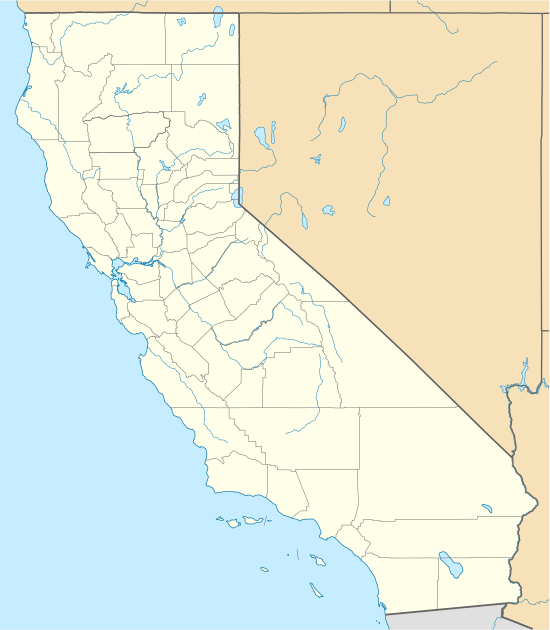Posey Creek Station
Posey Creek Station of the Butterfield Overland Mail 1st Division was located on Posey or Poso Creek, in the southeastern San Joaquin Valley, in present-day Kern County, California.
| Posey Creek Station | |
|---|---|
 Location of Posey Creek Station in California | |
| Location | Bakersfield-Glennville Rd. and Round Mountain Rd., Kern County, California |
| Coordinates | 35.522778°N 118.963056°W |
| Reference no. | 539 |
History
The station was at the site of the earlier Depot Camp on Posey Creek, established by the 1853 Pacific Railroad Survey Expedition of the U. S. Army led by Lieutenant Robert Stockton Williamson. It was a stopping place on the Stockton - Los Angeles Road.
The Butterfield Overland Mail (1857–1861) stagecoach station was located here in 1858, 15 miles (24 km) southwest of Mountain House station and 10 miles (16 km) north of Gordon's Ferry (Kern River Station) on the Kern River.
Landmark
The site is 2.5 miles (4.0 km) east of the intersection of Glennville-Bakersfield/Granite Road and Round Mountain Road. The California Historical Landmark Marker Number 539 at the intersection is seen on the left when traveling south on Glennville-Bakersfield/Granite Road.[1]
References
- Mildred Brooke Hoover, Douglas E. Kyle, Historic spots in California, Stanford University Press, Stanford, 2002; p.130
External links
- Posey Station of Butterfield Overland Mail Lines Shows photos of the base of the missing Marker #539.